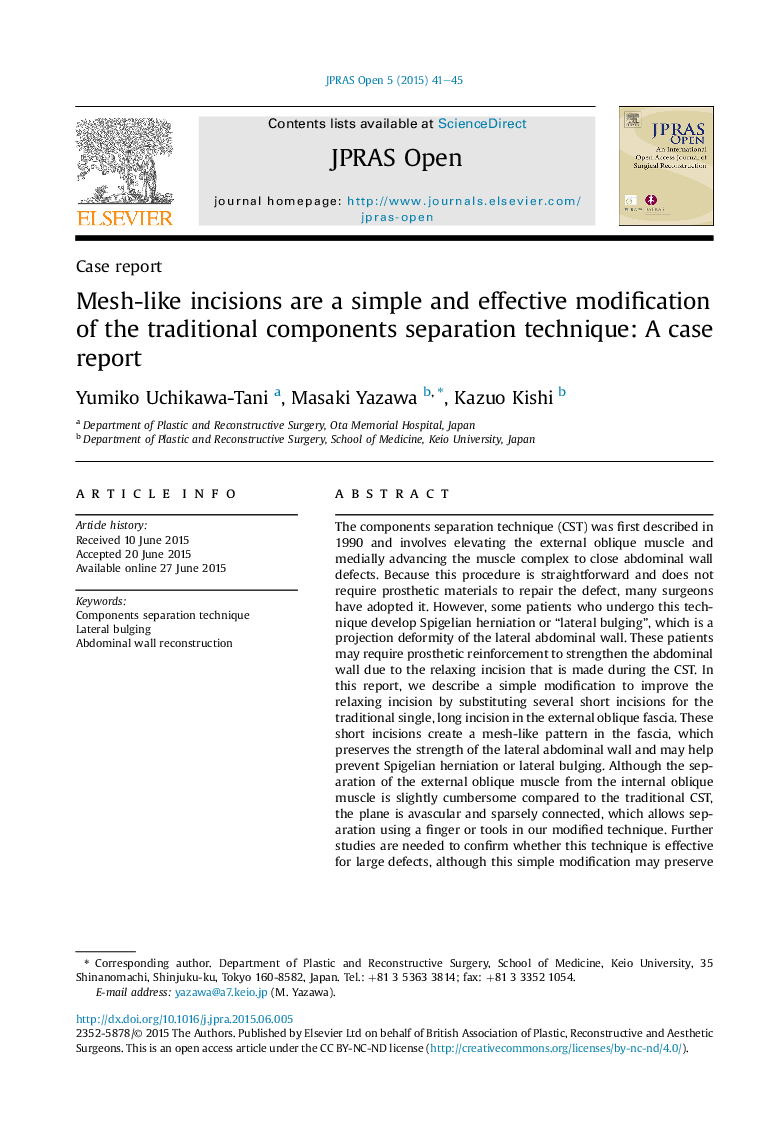| Article ID | Journal | Published Year | Pages | File Type |
|---|---|---|---|---|
| 4305754 | JPRAS Open | 2015 | 5 Pages |
The components separation technique (CST) was first described in 1990 and involves elevating the external oblique muscle and medially advancing the muscle complex to close abdominal wall defects. Because this procedure is straightforward and does not require prosthetic materials to repair the defect, many surgeons have adopted it. However, some patients who undergo this technique develop Spigelian herniation or “lateral bulging”, which is a projection deformity of the lateral abdominal wall. These patients may require prosthetic reinforcement to strengthen the abdominal wall due to the relaxing incision that is made during the CST. In this report, we describe a simple modification to improve the relaxing incision by substituting several short incisions for the traditional single, long incision in the external oblique fascia. These short incisions create a mesh-like pattern in the fascia, which preserves the strength of the lateral abdominal wall and may help prevent Spigelian herniation or lateral bulging. Although the separation of the external oblique muscle from the internal oblique muscle is slightly cumbersome compared to the traditional CST, the plane is avascular and sparsely connected, which allows separation using a finger or tools in our modified technique. Further studies are needed to confirm whether this technique is effective for large defects, although this simple modification may preserve the strength of the lateral abdominal wall without the need for prosthetic materials.
